Little Oven Eggs Me On...
Thanks everyone for all the suggestions and I am anxious to try them. I baked a loaf this morning, incorporating an egg white (as suggested by Little Oven), into the mix but still retaining the original 7oz of liquid to my 3-1/2 cups of all purpose flour. As this was an experiment, comparing this loaf to the last one I baked with Tom’s input, I followed the instructions for the previous loaf except for the addition of one egg white.
There was a nice rise after 15-minutes but the dough was notable drier than the previous loaf:
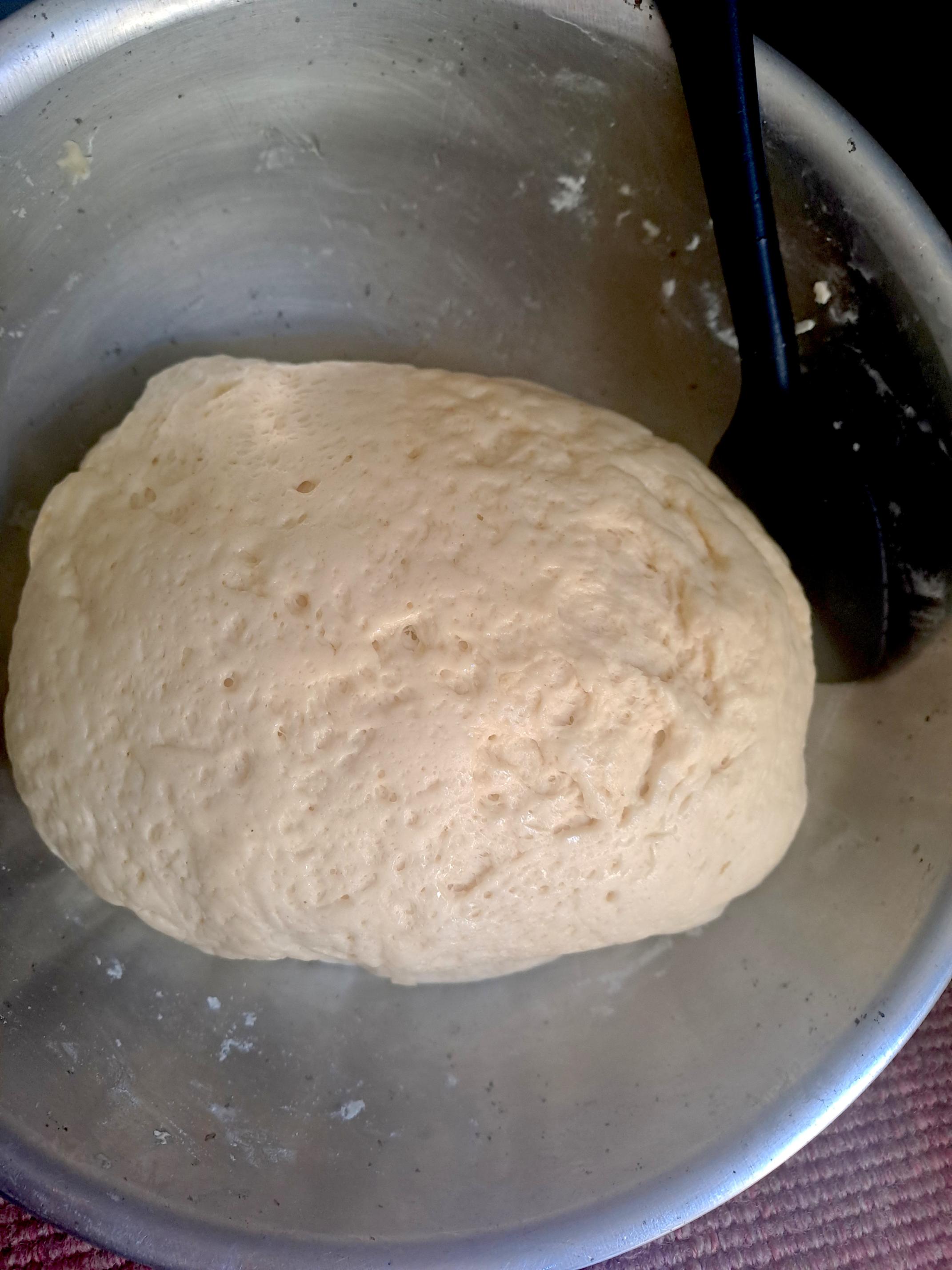
I kneaded for 10-minutes, my stretch and fold method on the counter-top. The dough was harder to work with and the alligator-ing was more noticeable. The photo shows the dough stretched out before folding:
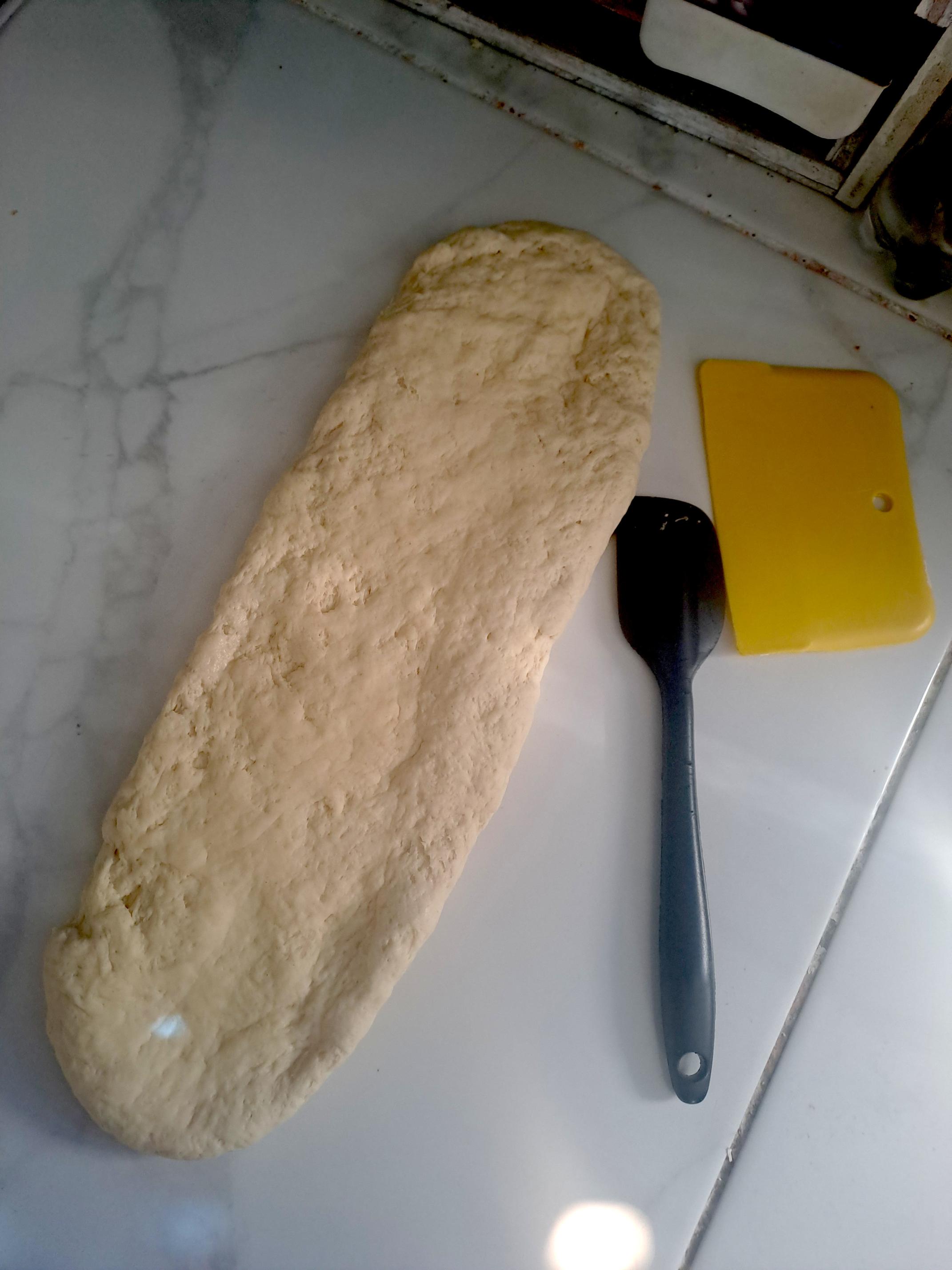
After a 15-minute rest, I tried stretching the dough... with dubious results:
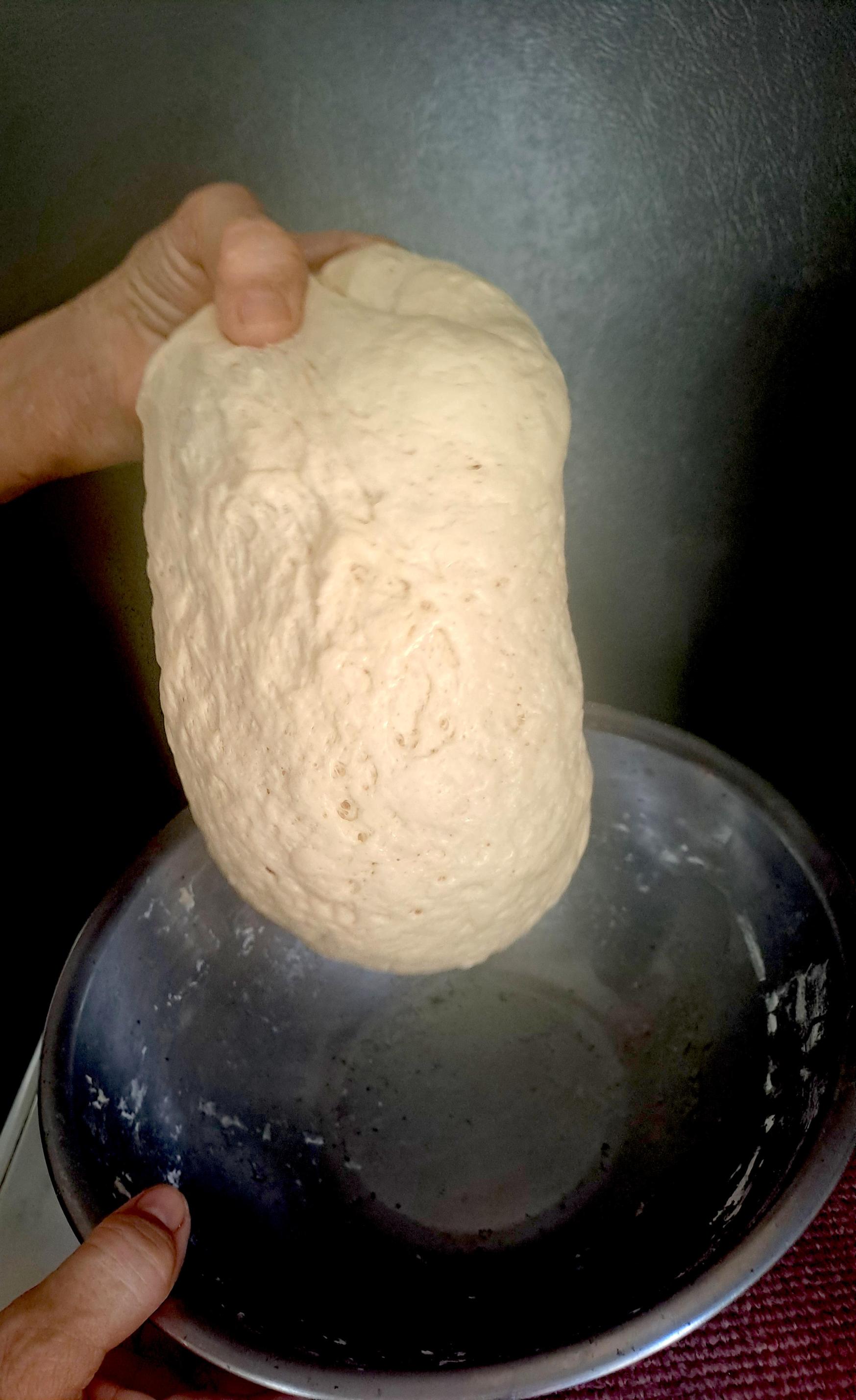
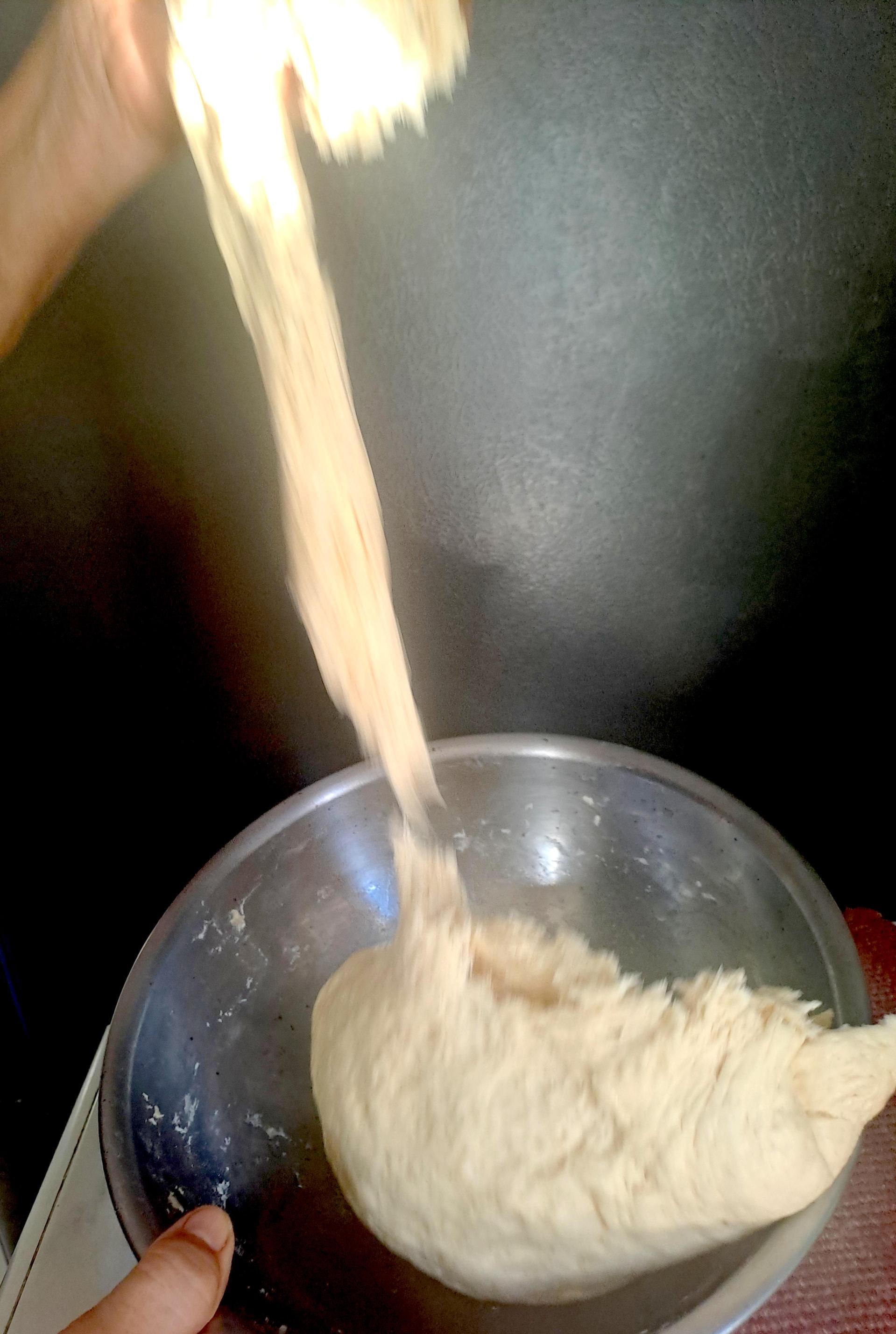
After balling up the dough, it rested for another 30-minutes before being sliced and floured:
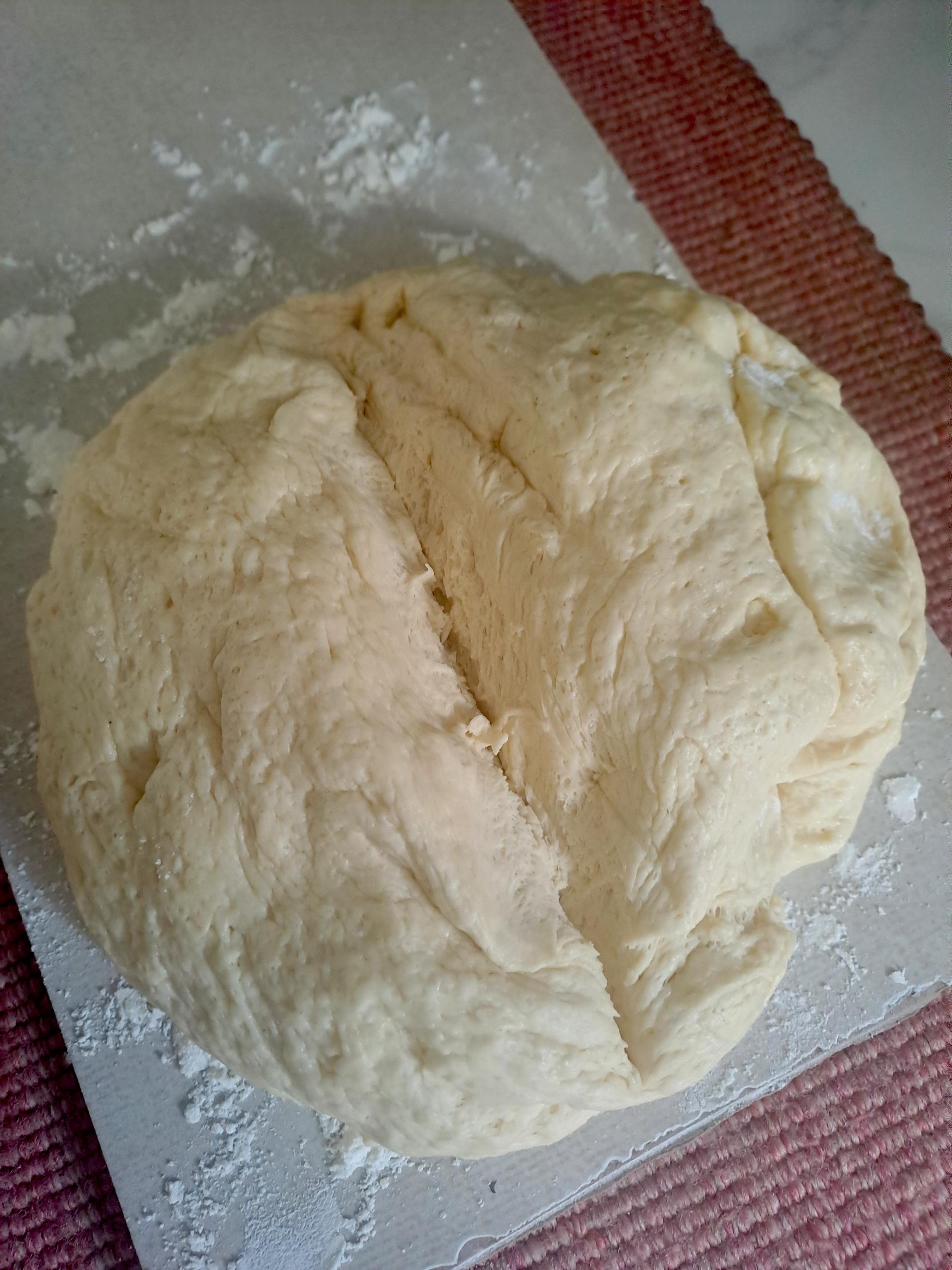
The ball was placed in a pre-heated oven (500F for 30-minutes) with steel and a bowl of water below the rack. It was baked at 450F for 40-minutes.
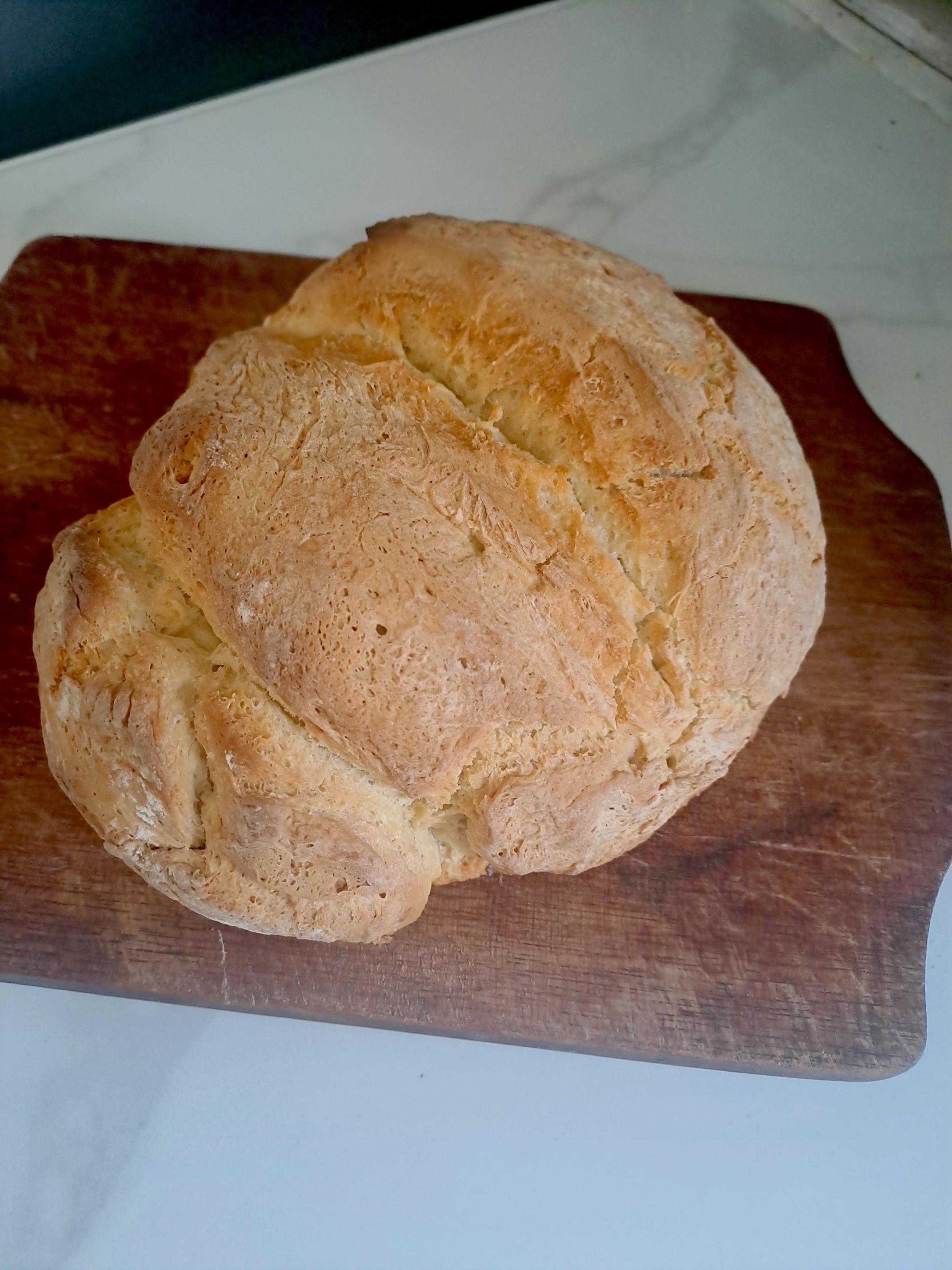
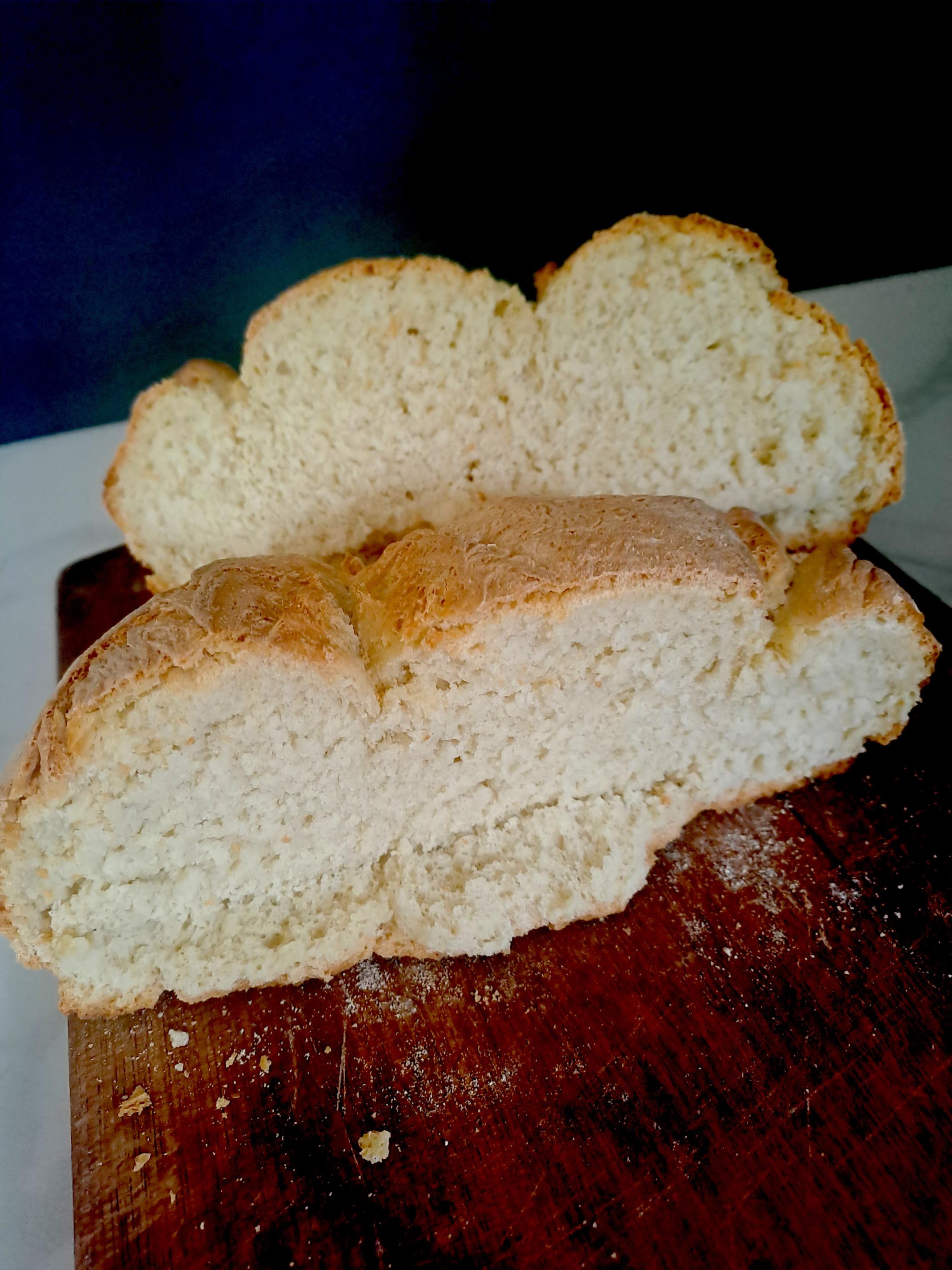
The color of this loaf was a vast improvement over the previous loaf. The crust wasn’t as hard, except on the bottom which took some sawing with the bread knife. The crumb isn’t as airy as I would like, a bit “doughy” ...soft and chewy, but quite tasty. So another win. Comments most appreciated.
It's Mini Oven. 🙂
First observation: the dough still looks very dry and rough. This impression is further reinforced by the appearance of the bowl; there are very few traces of dough.
Perhaps I’ve missed something but my impression is that you are waiting 15 minutes or more between mixing and kneading. Is that correct? If so, I’d suggest kneading it immediately after mixing until it is smooth.
Re: stretch and folds. That's a technique that is usually employed to build strength in very wet, loose doughs. Given the texture of the pictured dough, I’m not sure that it will provide much value for you.
The dough tearing in the fourth photo indicates a very weak dough, especially considering its dryness. I think it points to a rather weak flour, as you’ve mentioned in earlier posts, and to inadequate dough development. Possible adjustments include slightly higher water content (enough to fully hydrate the flour in the dough but not so much as to make it gloppy) and additional kneading immediately after mixing until the dough is smooth. If the dough is more extensible and less elastic than you want, then stretch and folds may be warranted.
While I realize that you are working with tropical temperatures, that dough does not look adequately risen before it was baked. If you are using the clock as your primary means of determining when the dough is ready, keep in mind that yeast can’t tell time. Try using something as an aliquot jar. It could be a shot glass, a pill bottle, a graduated cylinder, you name it. It should be clear to allow the dough to be visible inside and have a constant diameter for its full height. Put a small lump of dough in the aliquot jar at the same time that you shape the loaf for its final rise. Tamp the dough lightly so that the top is level, then mark the height of the dough. Make another mark that is twice the dough's starting height; when the dough reaches the second mark, it will have doubled its volume. If you want some other amount of expansion than doubling, you’ll want to place that second mark accordingly.
Paul
The problem she's been having is that in earlier attempts with more water, The dough would turn to glop before it was ready to bake, stretched or not. I suggested lowering the water, and that more or less worked but produced a very dry dough. I think that egg whites absorb water, don't they? That has made the dough even drier.
I suggested waiting 15 minutes before kneading only to make the kneading easier, and I still think it's a good idea. If the dough didn't rise so fast I'd have said 30 minutes. Of course, a dry dough isn't going to be able to handle as much pulling before it breaks, not without a lot more time and S&Fs.
At this point, I think it's time to increase the water a little and see if the dough still holds up. 7 oz of water with 3 1/2 c of flour is a hydration of around 45%. Try 1/2 oz more water, which will raise the hydration by about 3 percentage points. Also lower the yeast a little, to get more time before the dough is ready to bake. Try 3/4 as much yeast. The extra time will allow for at least one more stretch-and-fold session, which will improve the dough.
These recommendations are based on my experience with a very touchy flour. At 58% hydration it handled well and made a very good loaf. At 62% it deteriorated over time and didn't bake up well. Any higher and the dough turned to glop more and more as time and stretching went by. I have been assuming that Katie's flour is acting in a similar way. The idea is to get a workable loaf with a short ferment, then to increase the water and time little by little to find what their limits are.
Katie has achieved a workable loaf, even though the dough is dry, so it's time to increase the water and/or time a bit.
TomP
Katie definitely has a challenge on her hands with this flour.
Mini's suggestion to use egg whites was based on her previous experiences with weak flours. The egg white proteins provide additional strength for the dough. They don’t rob the dough of water, although they can lead to a drier mouthfeel in the finished bread.
When I have had to figure out the capabilities of new flours, I’ve usually made a range of small test doughs at different hydration levels to see how they behave. Of course, I had the advantage of using a digital scale that gave me good control over the quantity measurements. If I recall correctly, Katie doesn’t have that luxury. Still, one could get fairly close with volume measurements.
A U.S. teaspoon of water weighs 5 grams, pretty much. A U.S. half cup of flour (stirred, gently spooned into the cup, and leveled) weighs 60-65 grams. So, 12 teaspoons of water to one half cup of flour would be approximately 100% hydration, while 6 teaspoons of water would be close to 50%. Each half teaspoon of water is about 4 percentage points of hydration. Not very precise, I’ll grant, but good enough to give a sense of what is not enough and what is too much. It’s certainly easier than baking one batch after another. Scaling up to recipe quantities will take some arithmetic that isn’t necessary when working directly with grams.
I agree that the most recent iteration of the dough certainly looks like it needs more water; though not very much, based on the results of previous bakes. I’d still advocate for immediate kneading of the dough so as to ensure that all is the dough is uniformly hydrated. The uneven wet and dry zones in the dough make it harder to manage since the dough cannot respond to external or internal forces in a consistent way. After the dough is a consistent mass, then one can assess whether or not stretch and folds are required.
Katie, please accept my apologies if I have made things more complicated for you. Feel free to disregard anything that I have said. As you can see, experienced bakers can have differing opinions about how to deal with a problem. All the more so when none of us are with you in your kitchen. Best of luck with your continued efforts. I’m confident that you will achieve the bread that you want.
Paul
My apologies to Mini Oven....
For some reason my last photo didn't up load.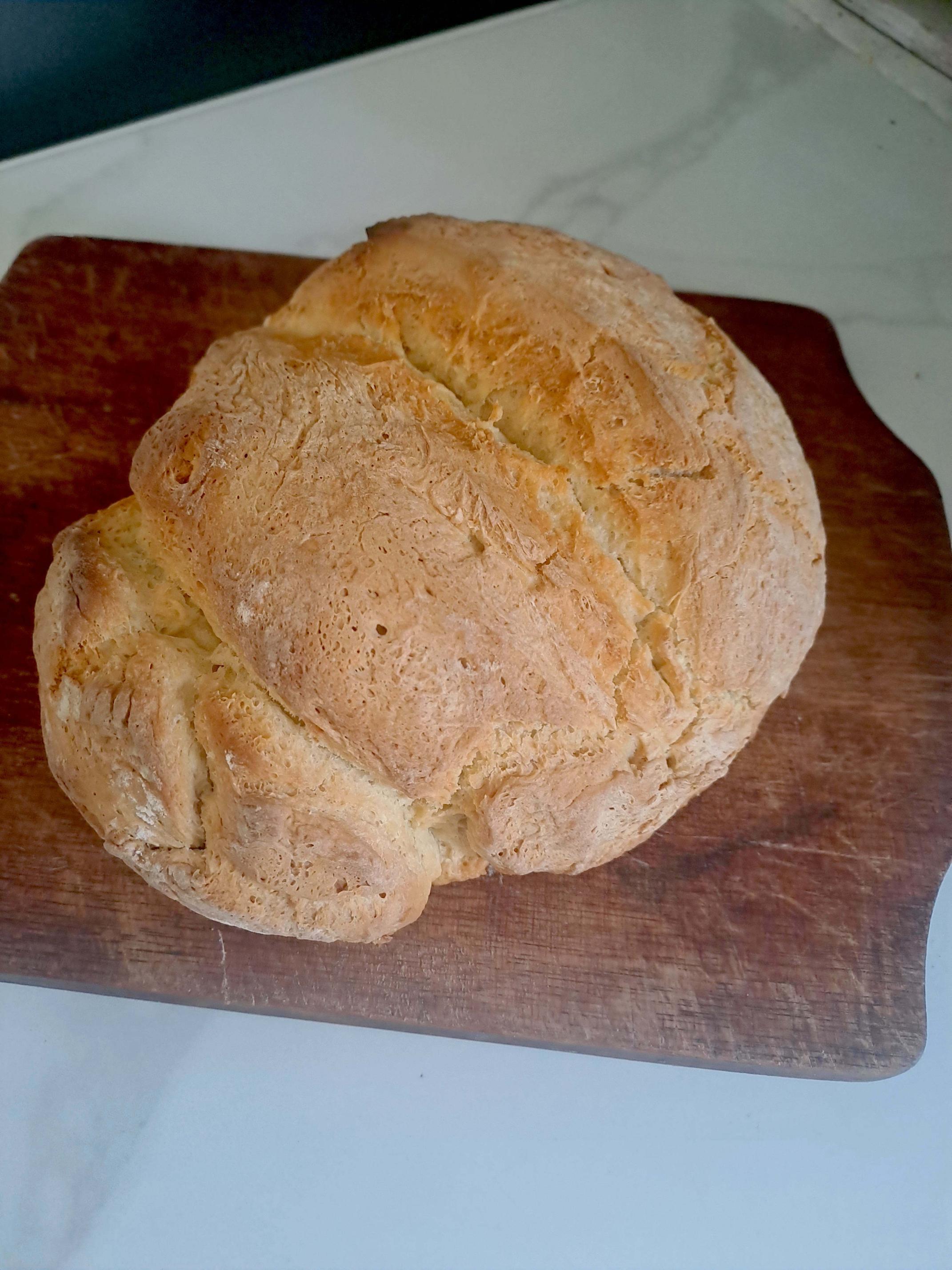
Or maybe they did up load. Tech is more daunting than bread baking!
Yeah... mix, let rest 15-min, knead 10-min, let rest for 15-min, do a test stretch so folks on the forum can assess the dough strength, then let rest for 30-min before baking.
Thanks, Katie
If a softer crust is part of your goal, try baking at a lower temperature, for a little longer. 450º is pretty high for that.
I thought it was cute (little and mini are pretty much the same) It did take me a little time to find this post. Sorry I"m late. I was wondering it you had tried the 'ol egg white trick, as I fondly call it. Delighted to see you tried it.
I soaked dried black turtle beans a couple of times (overnight soak and then chopping them up fine before adding) which also added some extra protein for bonding. Gave me a very nice high soft bread from weak flour. Almost like a Brioche. Made the crumb look like I added chocolate chips and was very yummy! That was in Costa Rica.
Cow"s milk might also be a consideration for raising protein instead of water, or 50/50. Milk is also a tiny bit dryer oz for oz when compared to water.
Is anyone checking the salt content on the recipe? If the salt is too low... ?
I dragged my old broken kitchen oven away today and picked up my new oven, so hopefully baking again soon in a larger oven. Have to organise the muscle to get it out of my car and into the house.
Enjoy a short baking holiday, Mini
I have to change out about 30% of my all purpose flour with starch to get your crumb when making my American cake recipes work. That got me to thinking that the hard bottom crust might be improved if your oven is set lower, Try closer to 325 F and for a longer baking time.
Tang Zhong (sp): On Another bake might wanna try making a gel from some of the recipe flour and water. Flour, say 1/8 cup flour to 1/4 to 1/3 (3/8) cup water and zap in the microwave for 30 sec on 750w power, or cook until it thickens softly. Might need to add a tablespoon or more water to keep it soft after just bringing it hot enough thicken but not boil. The idea is to pre-gelantinize a little bit of the flour. This goop then gets mixed into the straight dough right away.
Let us know how it comes out on this thread.
Mini